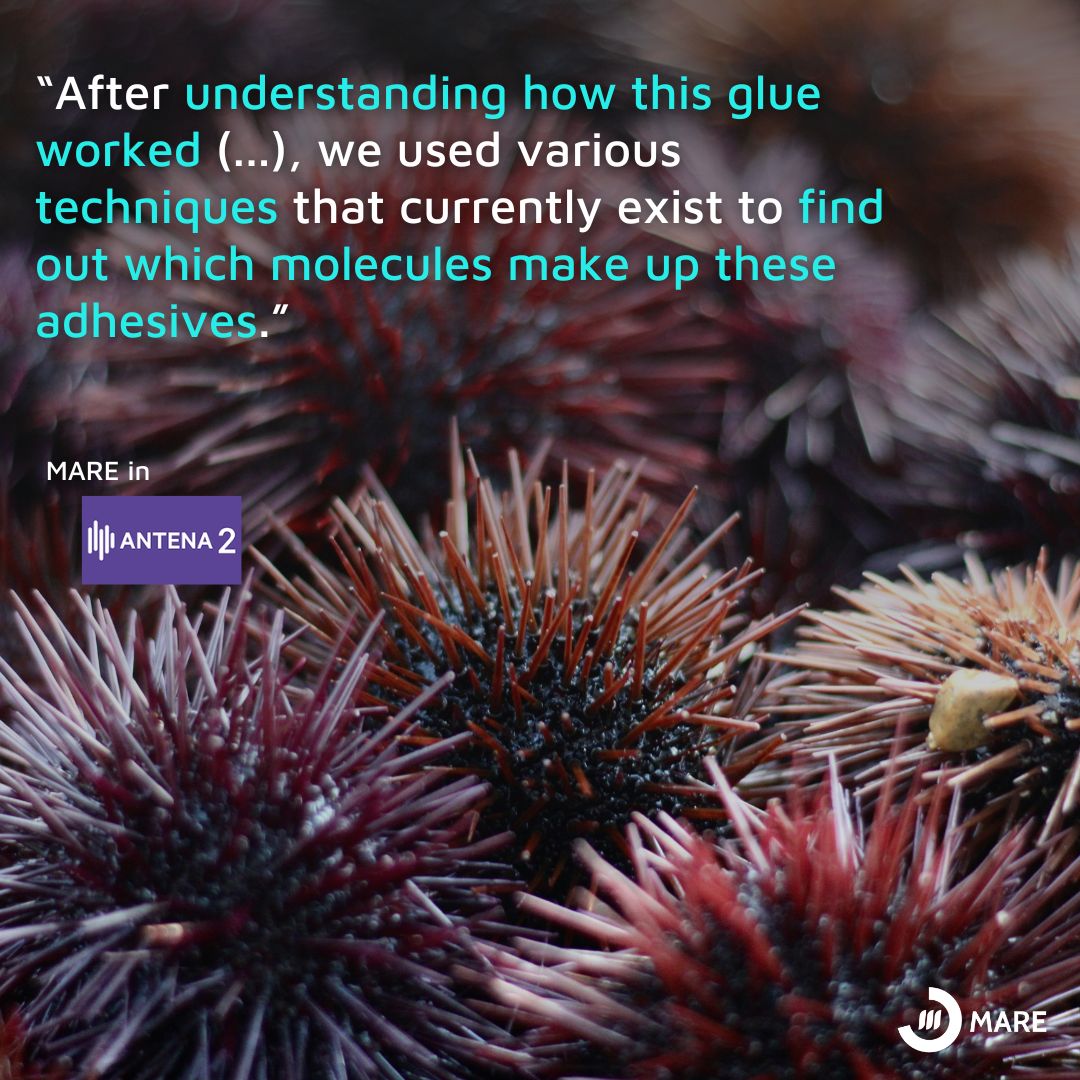Romana Santos on the Antena 2 Science program
MARE researcher Romana Santos was the latest guest on the Antena 2 Science podcast, where she talked about her project to create bioadhesives in the laboratory for medical and industrial applications.
For many years, MARE researcher Romana Santos has been studying the ability of sea urchins to survive in places as adverse as intertidal zones. As the MARE researcher explains, these rocky areas are very aggressive environments due to the breaking of the waves and the rise and fall of the tide. 
In order to survive in these places, sea urchins produce a biocoel that allows them not only to attach themselves to the rocks, but also to feed and even move around. “They are herbivores, so they capture small algae by scraping their teeth on the rocks. These teeth are in the oral area in contact with the substrate, or if there is algae around the animal, these adhesive organs can also capture it, attach themselves to it and then guide this algae to the oral area that is in contact with the substrate,” explains Romana Santos. Sea urchins, “have hundreds of these adhesive organs that coordinately take the animal in the direction it wants to go and attach it to the substrate”.
According to the MARE researcher, these adhesives have much higher capacities than many synthetic adhesives, especially in the presence of water and salts. Furthermore, as their components are not derived from petroleum, they are natural components such as proteins and sugars, biocompatible and biodegradable.
“After understanding how this glue worked in the natural and animal environment, and studying various species of sea urchin, we used various techniques that currently exist to find out which molecules make up these adhesives,” he says. For several years, Romana Santos' team has been building its own protein databases, studying their sugars as well. “Now that we have this database, we are able to select some of these most important adhesive proteins,” and produce them in large quantities by extracting them directly from animals using bacteria as ‘factories’. In this way, the researcher is able to carry out the tests she wants, testing whether or not these proteins are still adhesive, their stability and their biocompatibility in different environments.
As for applications, these proteins could be used as molecules that help cells to attach themselves in a laboratory context. According to the researcher, this includes the production of cells in the laboratory that can attach to each other and proliferate, replacing animal experimentation with tissues and organs, and allowing the production of meat or fish in the laboratory.
For Romana Santos, the great advantage of these molecules is that their adhesive capacities adapt to changes in the environment in which they are found. This means that from the same molecule we can develop adhesives for different applications and with different requirements. “We are currently looking for applications that are easier to approve and whose time to market is shorter,” he concludes.
To listen to the episode click HERE
Written by Patrícia Carvalho
